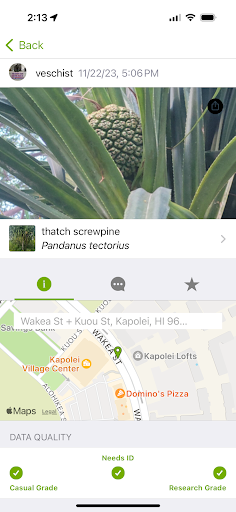Why Choose the Pūpūkea Marine Life Conservation District?
The rationale for choosing the Pūpūkea Marine Life Conservation District (MLCD) as a study area is multi-faceted, emphasizing its unique ecological, cultural, and management significance. Situated on the North Shore of O‘ahu, Hawai‘i, the Pūpūkea MLCD spans approximately 100 acres and includes a mile of coastline. This protected area offers a valuable opportunity to study biodiversity due to its rich and diverse ecosystems. Home to a vast array of native marine life, including many endangered species, the MLCD's habitats—ranging from submarine caves and high-wave impact zones to the Kapo‘o Tidepool—support over 80 fish species, 30 algae species, and numerous coral and invertebrate species.
The dynamic nature of Pūpūkea MLCD, with seasonal high wave activity and unique brackish water conditions, provides a natural laboratory for examining marine ecology and wave impact effects. Additionally, the area's biodiversity plays a crucial role in replenishing fish stocks in surrounding regions through the spillover process.
The historical and ongoing management efforts of Pūpūkea MLCD enhance its significance as a study area. Established in 1983 in response to declining marine life, the district has seen adjustments in boundaries and regulations to improve conservation outcomes. Recent management plans, including the incorporation of the Kapo‘o Tidepools in 2021, involve extensive community collaboration and aim to address threats like overuse, illegal fishing, and pollution.
Conducting research in Pūpūkea MLCD aligns with ongoing conservation initiatives and can provide insights into the effectiveness of current strategies while identifying potential improvements. The area's high public interest and frequent use make it an excellent site for educational outreach and advocacy, facilitating community engagement and raising awareness about the importance of preserving this unique ecosystem.
In conclusion, the Pūpūkea Marine Life Conservation District presents an ideal context for biodiversity research due to its ecological richness, dynamic habitats, and strong community involvement in management efforts. Research here can contribute significantly to marine conservation understanding and support sustainable management practices for future generations.
Resources:
Google Maps link to Pūpūkea Marine Life Conservation District: https://maps.app.goo.gl/Z3TJDiFXjLvX3cR89
History of the MLCD: http://pupukeawaimea.org/pupukea-waimea-mcld/history-of-the-mlcd/
Holomua Marine Initiative: https://dlnr.hawaii.gov/holomua/pupukea-marine-life-conservation-district-mlcd/





Comments
Post a Comment